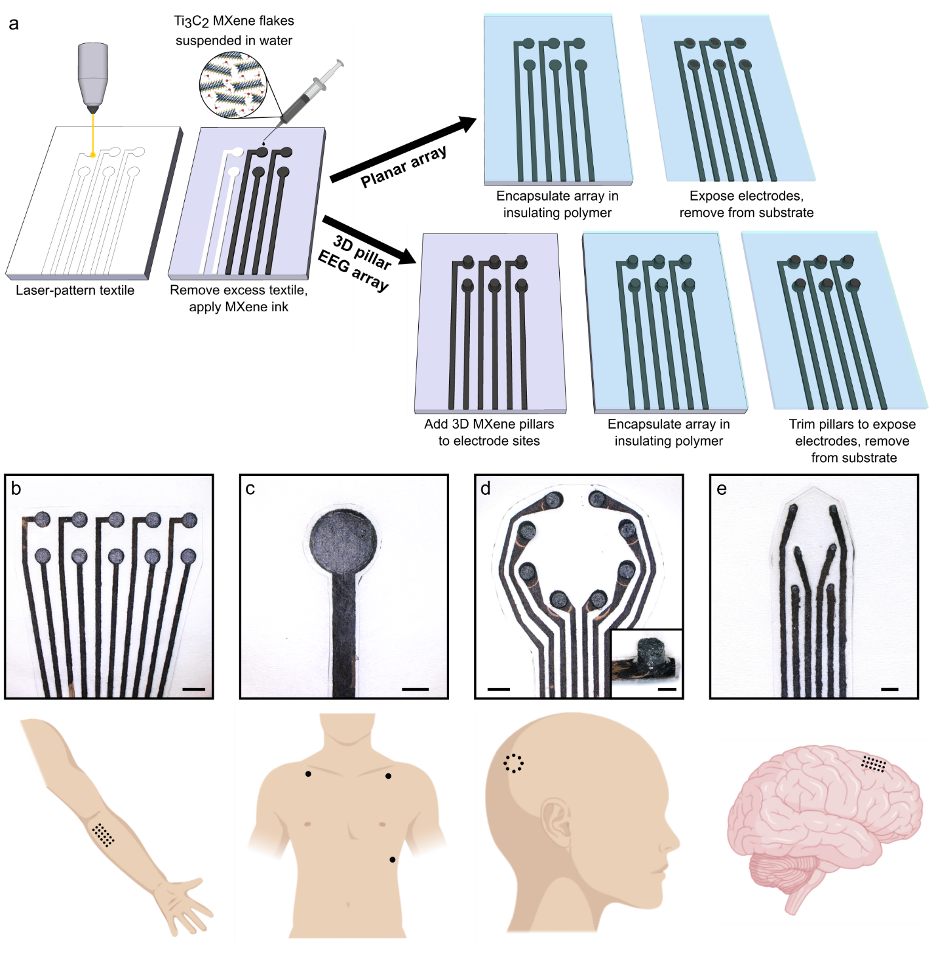Rapid, low-cost, and scalable production of comfortable electrode arrays suitable for measuring biosignals
Problem:
Medical electrodes convert ionic currents within the human body into electric currents used to diagnose and monitor diseases. The global medical electrode market is currently valued at over $1B and continues to grow in response to new applications for these devices. Solutions-based processing methods are limited by a lack of conductive and biocompatible inks, making it difficult to produce electrodes with the same performance quality as metallic electrodes. Current fabrication processes are time-consuming, costly, and small in size. They are also incompatible with CT and MRI imaging.
Solution:
MXtrodes are bioelectric interfaces with low-cost, scalable production. These large-area multichannel electrode arrays have an electrochemical performance on par with that of Pt electrodes. MXtrode geometries can be customized to different applications and patient size. They can function gel-free and are compatible with CT and MR imaging.
Technology:
MXtrodes are made by patterning an absorbent material with a laser cutter and infusing laser-cut segments with a conductive ink. PDMS or an alternative rubber is poured directly onto the treated cloth and allowed to penetrate fully into the pores in order to introduce strength and flexibility. Electrode openings are exposed manually using a 3mm biopsy punch. The MXtrodes were shown to have reduced impedance and higher cathodal charge storage capacity compared to standard Pt electrodes.
Advantages:
- Compatible with many different material combinations
- Easy modification of electrode array patterning due to laser manufacturing
- Longer battery life than Pt electrodes due to more efficient charge transfer
- Reduced manufacturing cost
- Compatible with CT and MR imaging

Figure (a) shows the process of fabricating laser-patterned planar and 3D pillar MXene electrode assays. Figures (b)-(e) show various electrode array arrangements and their intended applications, including EMG (b), ECG (c), EEG (d), and ECoG monitoring (e).
Intellectual Property:
European, Hong Kong, US Patents
Pending
Case ID:
19-9002-TpNCS
Web Published:
6/11/2024
Patent Information:
| App Type |
Country |
Serial No. |
Patent No. |
File Date |
Issued Date |
Expire Date |